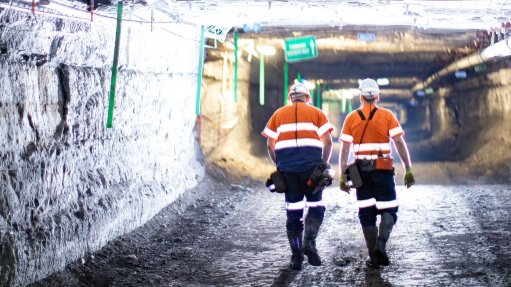Is the modular data centre the answer to the technology industry’s land and energy crisis?
This article has been supplied.
By Faith Waithaka, Cloud and Service Provider Segment Sales Lead: Anglophone Africa at Schneider Electric
According to research group, McKinsey & Company, data centres are fast becoming an attractive investment opportunity – from growth capital, buyout, real estate, and, increasingly, infrastructure perspectives. In fact, data centre deals were up 40 percent from a combined value of $34 billion the previous year, to $48 billion in 2021, says McKinsey and Company.
However, considering rising land prices and operational funding, business is looking for alternative locations and more inventive solutions to build data centres to keep pace with investment demands.
Businesses have typically built data centres in prime urban areas to allow for lower latency and network proximity to end-users. With the need for business data to be accessible and available 24/7, these locations are typically at lower risk of extreme weather, floods, and fires, which could take businesses offline for longer and impact operational profitability.
However, since 2021, there has been a growing trend in data centres moving away from overcrowded cities with higher land costs to more rural locations. Industry analysts agree, citing a growing need to build data centres closer to customers and take advantage of increasing availability of high-speed networks in rural areas and smaller cities.
Traditional data centres also absorb and emit a huge amount of energy, and this will only increase as we adopt newer technologies, like AI, that will generate larger volumes of richer data and contribute to the expected 500% growth in global data by 2025.
While the data centre industry needs to continue to evolve and expand to keep up with the latest technology advancements, it is also under pressure to reduce its carbon footprint and impact on local resources. Data centre businesses need to reinvent their architecture to remain both appealing and sustainable or find alternative solutions to keep regulators at bay.
A smarter, simpler and greener solution
To address the lack of space, cost of land, and climate control crisis within the data centre industry while remaining appealing to investors, one approach is the creation of a prefabricated and modular data centre that is secure, agile, and efficient.
The modular data centre enables data centre businesses to host business-critical data in a wide array of non-traditional terrains while costing less in building materials and land rental due to its size and ruggedness. Its plug-and-play set of containerised systems makes it fully operational in as little as six to nine months from design sign-off – reducing deployment time by almost 50 percent compared to traditional builds.
For larger enterprises, Internet giants and service providers, the modular data centre offers speed and scalability in multi-megawatt implementations that can grow as and when needed to meet customer demand. Similarly, for SMEs, the modular data centre helps to mitigate space and capacity constraints for a quicker deployment that’s capital-optimising.
Designing a prefabricated modular data centre is easier in comparison to its traditional counterparts. Third-party data centre experts focused on facilitating digital transformation journeys can offer a plethora of reference designs to reduce time and effort. Moreover, the modular data centre can be designed and built with sustainability in mind.
With a prefabricated data centre, power can be scaled up or down depending on demand. That’s why we are also seeing applications of the modular data centre in industrial and government sectors as well as emerging economies because of its scalability, durability, ease of transport, and compact footprint – enabling processing capabilities to be much closer to the user, whenever and wherever.
Article Enquiry
Email Article
Save Article
Feedback
To advertise email advertising@creamermedia.co.za or click here
Press Office
Announcements
What's On
Subscribe to improve your user experience...
Option 1 (equivalent of R125 a month):
Receive a weekly copy of Creamer Media's Engineering News & Mining Weekly magazine
(print copy for those in South Africa and e-magazine for those outside of South Africa)
Receive daily email newsletters
Access to full search results
Access archive of magazine back copies
Access to Projects in Progress
Access to ONE Research Report of your choice in PDF format
Option 2 (equivalent of R375 a month):
All benefits from Option 1
PLUS
Access to Creamer Media's Research Channel Africa for ALL Research Reports, in PDF format, on various industrial and mining sectors
including Electricity; Water; Energy Transition; Hydrogen; Roads, Rail and Ports; Coal; Gold; Platinum; Battery Metals; etc.
Already a subscriber?
Forgotten your password?
Receive weekly copy of Creamer Media's Engineering News & Mining Weekly magazine (print copy for those in South Africa and e-magazine for those outside of South Africa)
➕
Recieve daily email newsletters
➕
Access to full search results
➕
Access archive of magazine back copies
➕
Access to Projects in Progress
➕
Access to ONE Research Report of your choice in PDF format
RESEARCH CHANNEL AFRICA
R4500 (equivalent of R375 a month)
SUBSCRIBEAll benefits from Option 1
➕
Access to Creamer Media's Research Channel Africa for ALL Research Reports on various industrial and mining sectors, in PDF format, including on:
Electricity
➕
Water
➕
Energy Transition
➕
Hydrogen
➕
Roads, Rail and Ports
➕
Coal
➕
Gold
➕
Platinum
➕
Battery Metals
➕
etc.
Receive all benefits from Option 1 or Option 2 delivered to numerous people at your company
➕
Multiple User names and Passwords for simultaneous log-ins
➕
Intranet integration access to all in your organisation



















